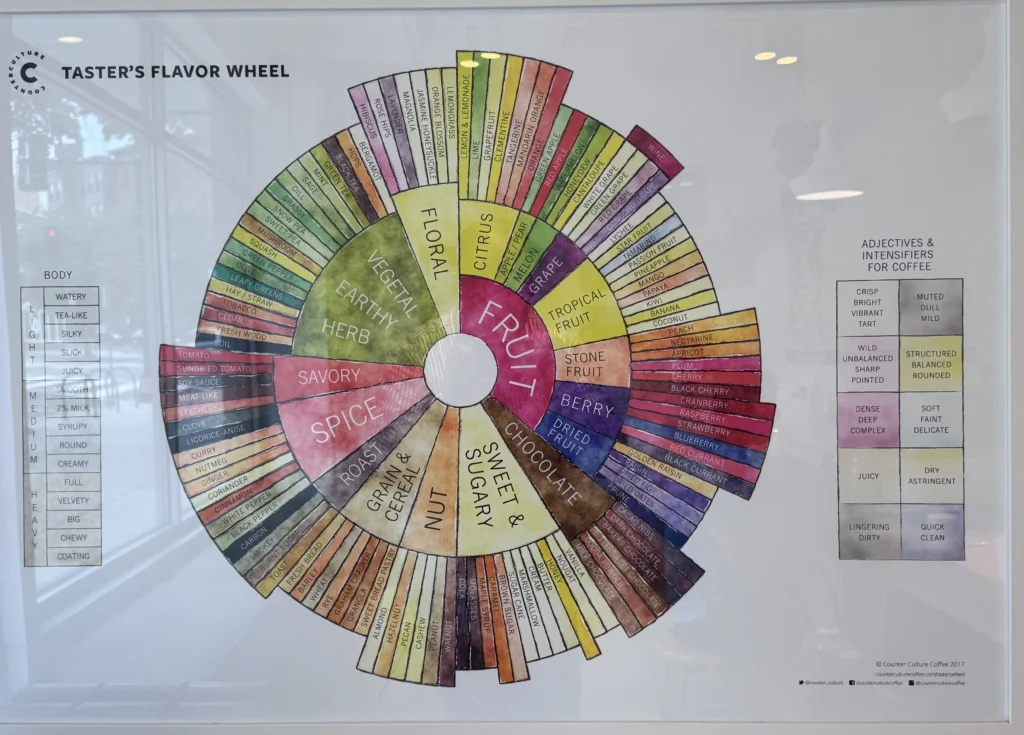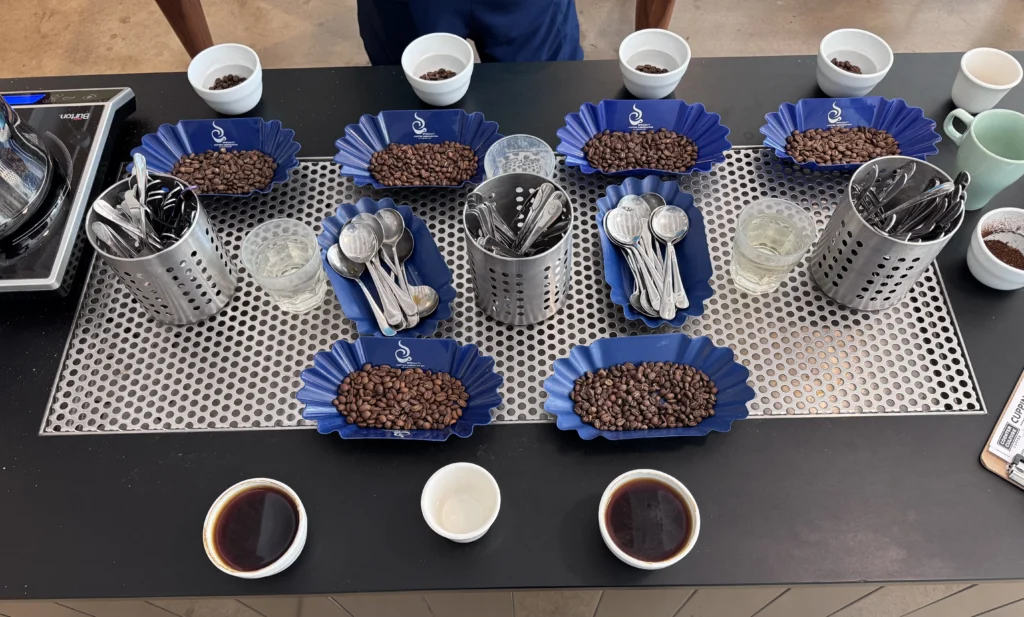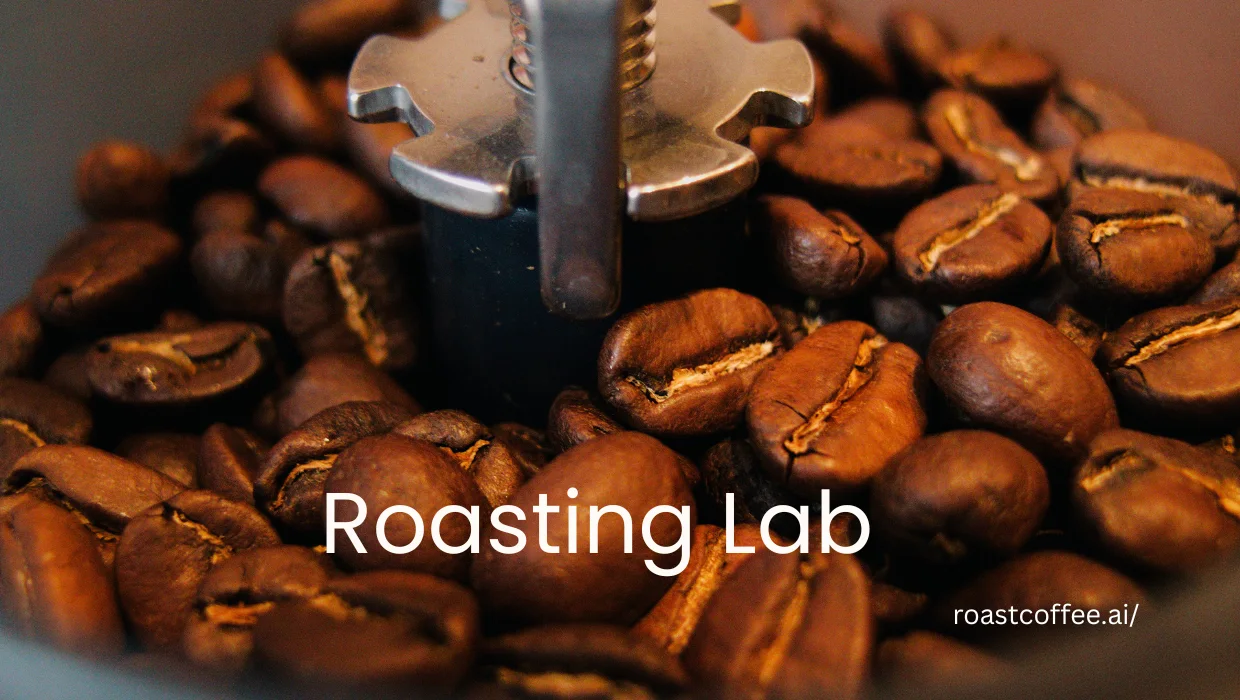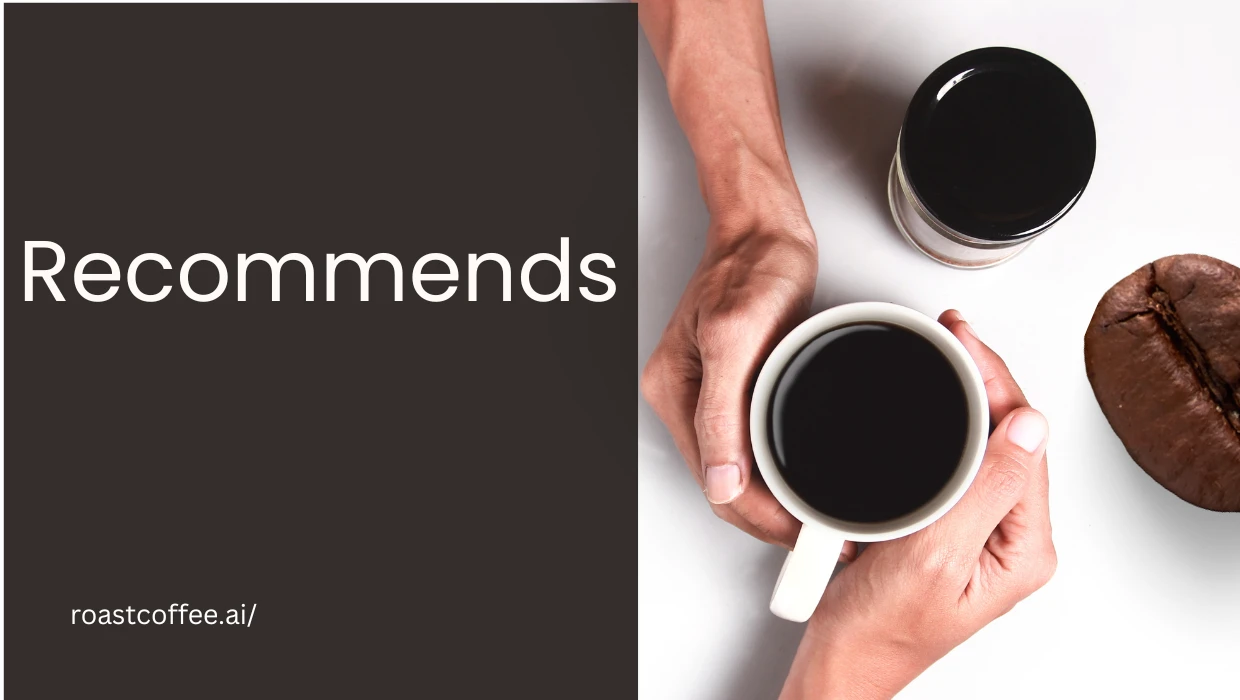This past Wednesday, August 13th, 2025, I had the opportunity to attend a Cupping and Palate Development Workshop hosted by Counter Culture Coffee in Washington, D.C.. It was a hands-on journey into the world of coffee tasting, guided by our incredible instructor Mike, who made the session both approachable and eye-opening.
The Science Behind What We Taste
Coffee tasting is as much about science as it is about enjoyment. It’s how our mind and tongue work together that creates flavor. The tongue senses four basic tastes—sweet, sour, salty, and bitter—while our rich sense of smell adds depth to those tastes. Behind it all, thousands of taste buds and millions of olfactory receptors send signals to the brain, making flavor a complex yet beautiful experienceDuring cupping, we focus on:
- Fragrance (dry grounds)
- Aroma (after hot water hits)
- Break (the moment we push through the crust)
- Flavor & Brightness (the zingy acidity your tongue feels)
- Body (the feel—light, creamy, or heavy)
- Aftertaste (what lingers after swallowing)

Mike reminded us that tasting is a skill—part practice, part science.
Our Tasting Journey: From Cola to Coffee—and Beyond
1. Flat Coca-Cola To Coffee
We began with a fun warm-up—tasting flat Coca-Cola. Strange as it sounds, it helped reset our palates. That deep, sweet fizz-less taste set the stage before moving to four different coffees.
2. Four Coffees, Side by Side
We tasted four coffees in sequence, comparing their aroma, acidity (brightness), flavor, body, and aftertaste—just like pro cuppers do Kohana Coffee. The contrasting profiles made it easier to pick out notes like citrus, chocolate, or nutty hints.

3. Palette Play: Foods & Flavors
Next came a fascinating exercise in aroma training:
- We sniffed and tasted lime, lemon, then walnuts, almonds, and pecans.
- Then we moved on to chocolates (different percentages), followed by dried fruits—raisins and berries.
- Finally, we tasted two different honeys.

4. The Jelly Bean Nose Trick
One of my favorite moments: chewing a jelly bean with my nose pinched closed—and then letting the aroma flow. The difference was night and day: blocked nose tasted bland, while unblocked flavor popped. It showed how much smell shapes taste.
Why It Matters
This workshop taught me that tasting coffee isn’t just sipping—it’s a full experience. Understanding terms like fragrance, break, brightness, body, and aftertaste gives you the power to describe flavor better—and to appreciate coffee more deeply.
Comparing different coffees side by side helps you catch subtle notes otherwise easy to miss. And training with foods like citrus, nuts, berries, and honey sharpens your aroma memory.
Plus, experiencing how smell impacts taste through the jelly bean trick was eye-opening—it’s a reminder how intertwined taste and aroma really are.
Thanks to Counter Culture Coffee and Mike’s excellent teaching, I left with a sharper palate, a better coffee vocabulary, and a whole new way of paying attention to taste.


